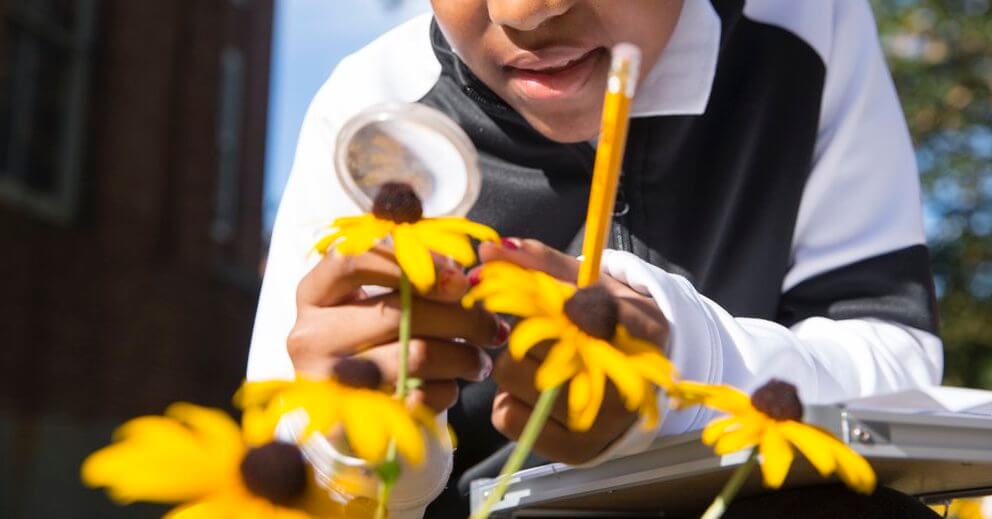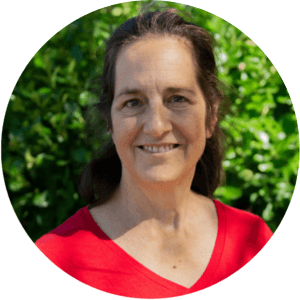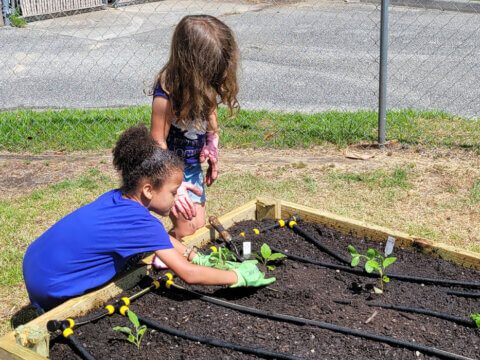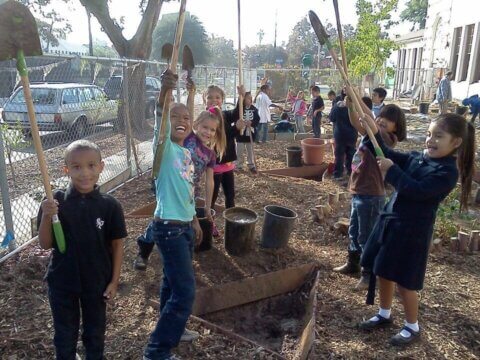CitySprouts school garden program improves science learning equity
Editor’s note: Jeffrey Perrin interviewed CitySprouts founder and executive director, Jane Hirschi, for this Q&A about the myriad benefits of gardening with children – and the enthusiastic responses that we see from children, caregivers and educators when they’re given the opportunity to participate in garden-based learning.
Jeffrey Perrin: Let’s start by telling our readers a bit about CitySprouts.
Jane Hirschi: CitySprouts is a program for urban school districts dedicated to supporting science equity through garden-based learning. We partner with public elementary schools in Cambridge, Massachusetts and Boston, Massachusetts to provide opportunities for children to learn by exploring the natural world. We integrate this mission into the school journey, always seeking to cultivate curiosity and wonder with hands-on science learning in urban gardens. I’m proud to say that we’ve been doing this work for more than 20 years.
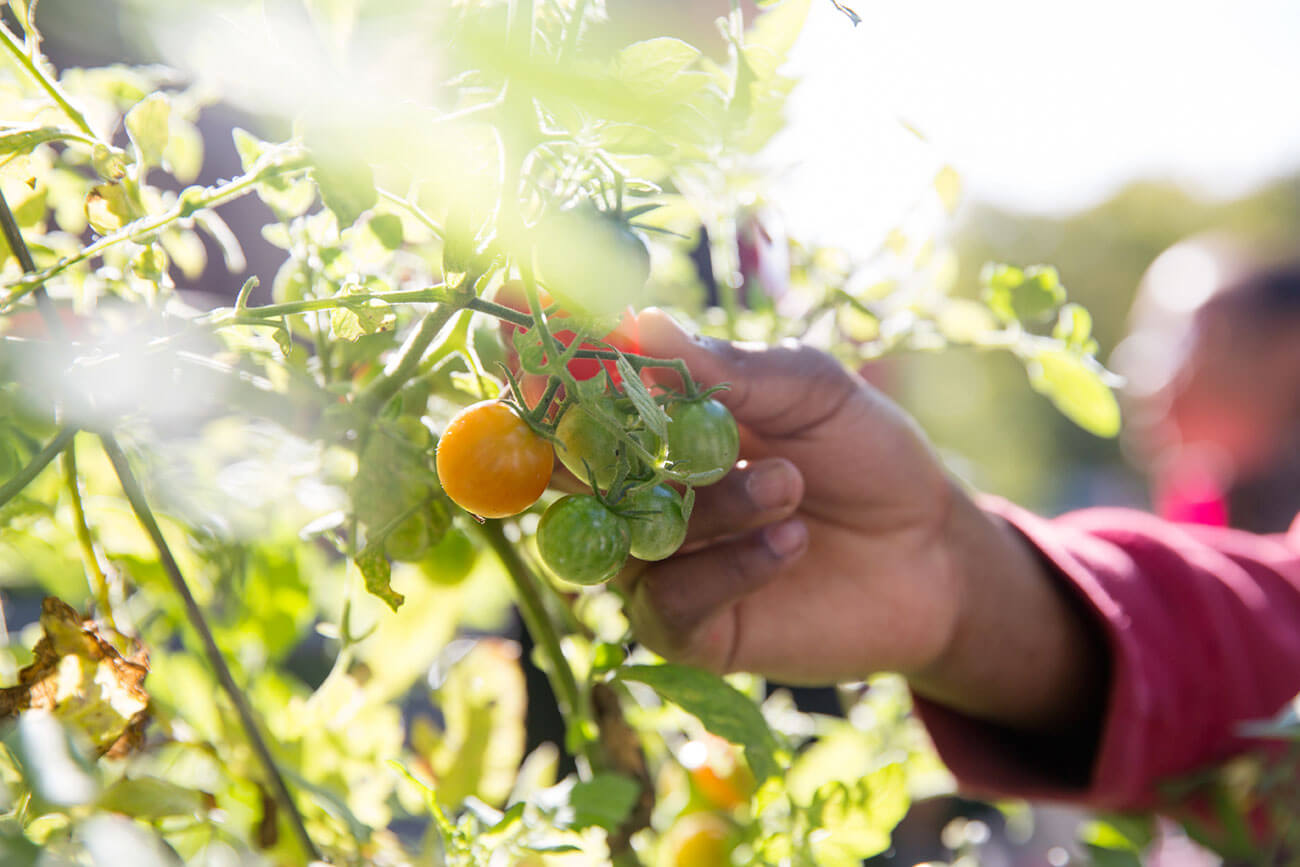
Photo courtesy of CitySprouts.
As one of the longest standing public school garden programs in the country, what can you pass along to other folks out there who are thinking about starting a school garden program?
I’d say you should take garden-based learning seriously, and you should take science equity seriously. When young children learn science through gardening in the natural world, it also helps their language development, literacy, and numeracy. There are so many studies that show the ways that children benefit from time spent in a garden.
And this may be obvious but I have to say it: garden-based learning gives kids not just a meaningful learning experience, but they also get to be in a garden—a place that is beautiful, grounding and dynamic. It’s such a sensory environment. For some children, the school garden is the only time in their day or their week where they get to be in a natural setting where they can explore and dig things up and plant things. It’s safe, but they also have autonomy. It’s a place for children to be joyful, feel happy, make friends, and be part of a community. All of that is equally important to the academic skills that they’re learning. The garden really facilitates that.
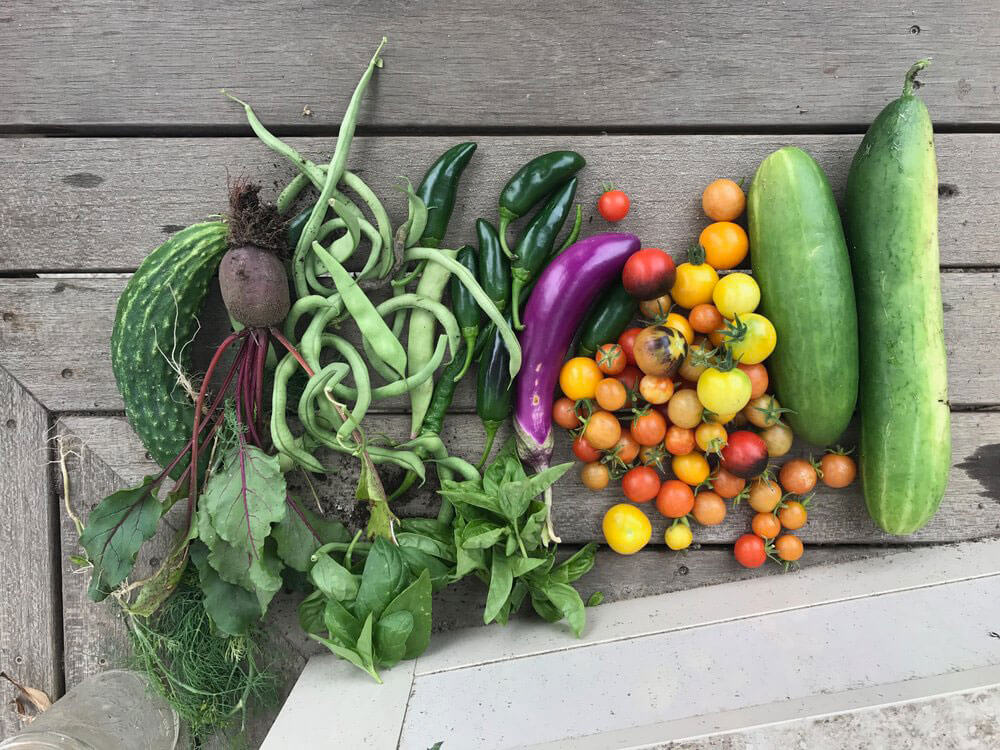
The bounty from Nathan Hale Elementary School.Photo courtesy of CitySprouts.
Where did the idea for CitySprouts come from?
I feel as if CitySprouts was an idea waiting for people to find it—and as founding director, I found it! My way into CitySprouts was as a parent. I had a young daughter and then a baby, and I began by volunteering in the classroom and doing the things that I love to do, which were hands-on things: cutting open vegetables and counting seeds, mixing things to make carrot muffins, working in the soil.
I was working with a wonderful public school teacher, and she brought in a couple of other teachers and then the school principal. It really began because the soil of the school was ready for something like CitySprouts, and I came along with the energy and the naiveté to try to do it. By the way, that first teacher that I worked with is still using CitySprouts today with her classes.
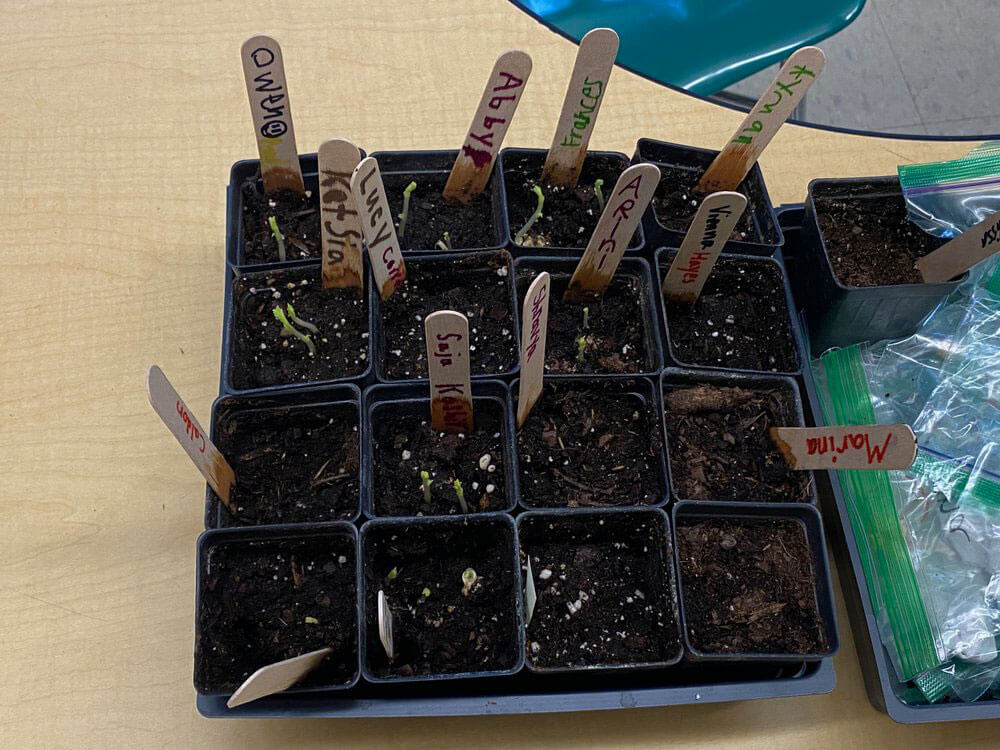
Third grade students’ garbanzo bean sprouts at the Morse school.Photo courtesy of CitySprouts.
Since you first were showing up by yourself in classrooms, CitySprouts has grown significantly in the past 20 years. What has that journey been like?
Well, we started in two schools in Cambridge with a total of seven classrooms. By the end of the year we asked ourselves, “Could we be in all of the schools in Cambridge? What a radical dream!” We were in all the schools in Cambridge within six years. And this is despite being led by somebody—me—who didn’t really know very much. But that’s how much schools wanted it. Today, we reach about 7,000 students each year through our various programs.
Equity is a key piece of CitySprouts’ mission. Can you talk more about what that looks like and why science equity is so important in the work that you do?
Because that’s where the need is. I think we’re right to really focus on developing a model specifically for under-resourced urban schools, serving historically marginalized populations. For our schools in Boston, 70% to 80% of our students are economically disadvantaged. In Cambridge, it’s about 50%. Cambridge is unique because it is a wealthy school district with a high proportion of kids who are economically disadvantaged.
I believe that every child and every school—private school, urban public school, wealthy school, Catholic school, charter school, suburban school—needs a school garden. That said, we focus on public schools exclusively, because I believe that public education is the most democratic institution that we have left in this country. Public education brings in families of such different ideas and backgrounds and experiences. And in order to be successful, public education really needs to be shaped not just by how children learn, but also by what families and parents and caregivers need and want.
There are so many families of color all over the country, definitely in Cambridge, definitely in Boston, that feel disenfranchised from public education, from their children’s schools and for such good reasons. How do we make our public schools truly antiracist organizations? If I didn’t believe it was possible, I wouldn’t be doing this work. I don’t have all the answers, but I know it’s so important that schools move in the direction of addressing inequities. I don’t want families to give up on fair and high quality public education.
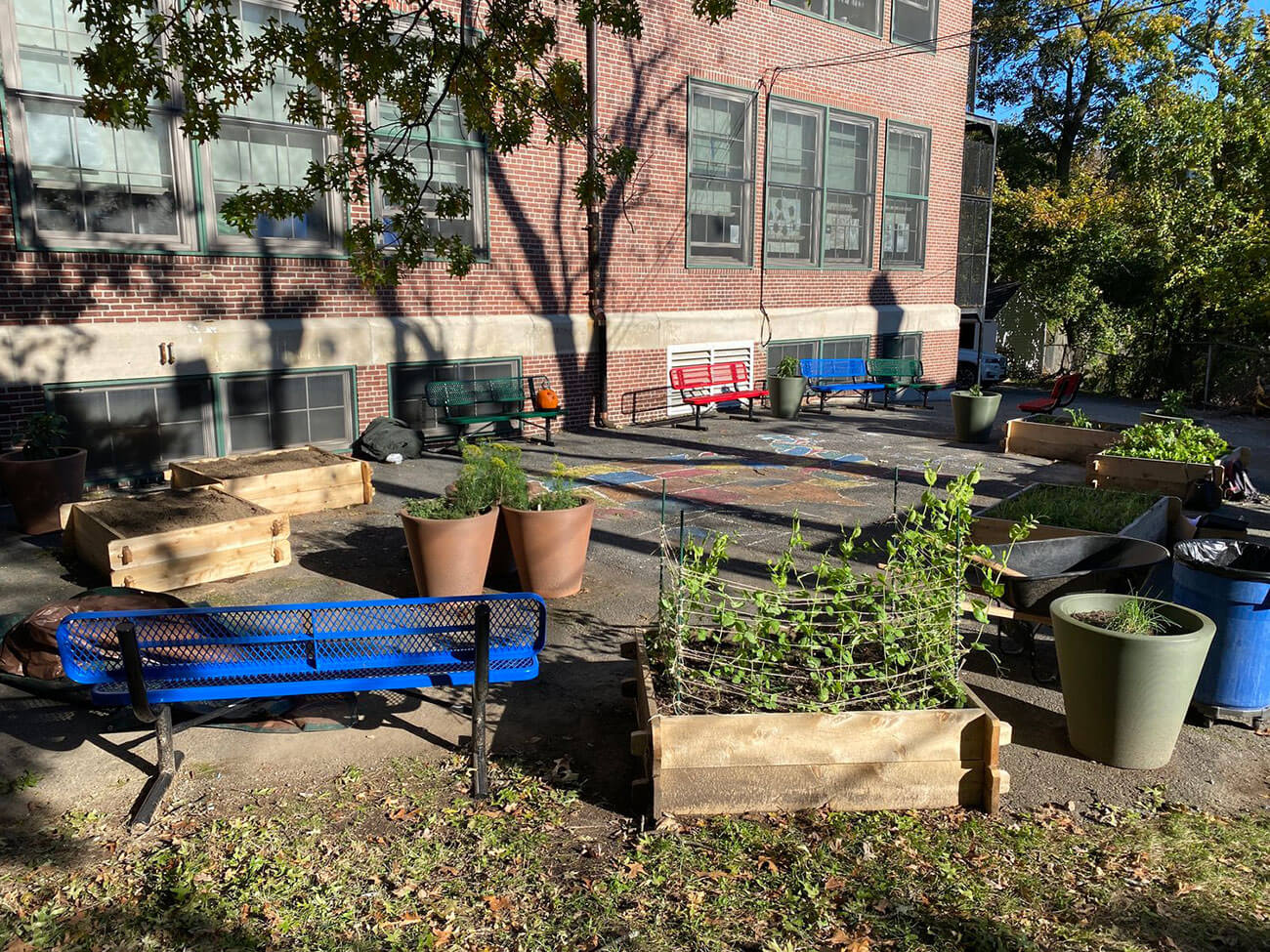
A new school garden enhances the schoolyard at Nathan Hale Elementary School.Photo courtesy of CitySprouts.
Why the emphasis on science education?
There’s a bigger picture here, of elementary students not getting science education until they’re in middle school, maybe, or even high school, which is already the point at which kids have decided that they’re not good at science—that science is something for other kids, not for them. In low resource schools, there’s even less of a chance that kids are going to get meaningful, high quality science that feels relevant to them.
And now you’re starting a new science education program, the Early Start in Science initiative. I understand that Early Start in Science is a curriculum that builds a science foundation for children through garden-based learning.
Science education isn’t new to CitySprouts but we’re taking a new approach to it. With Early Start in Science, we’re developing garden-based learning modules that are actually nested into the science curricula that teachers use in the classroom. Our modules are not just aligned with state standards or with the district curriculum, but actually integrated into a teachers’ science curriculum. We ask, “How can students explore this particular concept in the garden?”
This program is really capitalizing on the co-teaching partnership that our garden educators have with teachers. The science in the garden isn’t just a special event where teachers drop their students off in the garden—rather, our garden educators co-plan and co-teach with teachers. Classroom teachers come out to the garden and our garden educators actually go into the classrooms as well.
We’re aiming to improve students’ understanding of select scientific concepts, of course, but we are also targeting the students’ teachers and families. We’re working to help teachers have more confidence when teaching outdoors, and a better understanding of best practices for science education. And we are also working to improve families’ awareness of the importance of science learning and nature play for childhood development.
On the family front, we are thinking a lot about bringing activities to families that are related to those that we do in our school gardens. Families can do activities with things that they have in their house—they don’t need access to a yard. In fact, most of our families don’t have access to a yard or garden or community plot. So we’re thinking about ways to do growing activities and nature exploration, digging and planting at home.
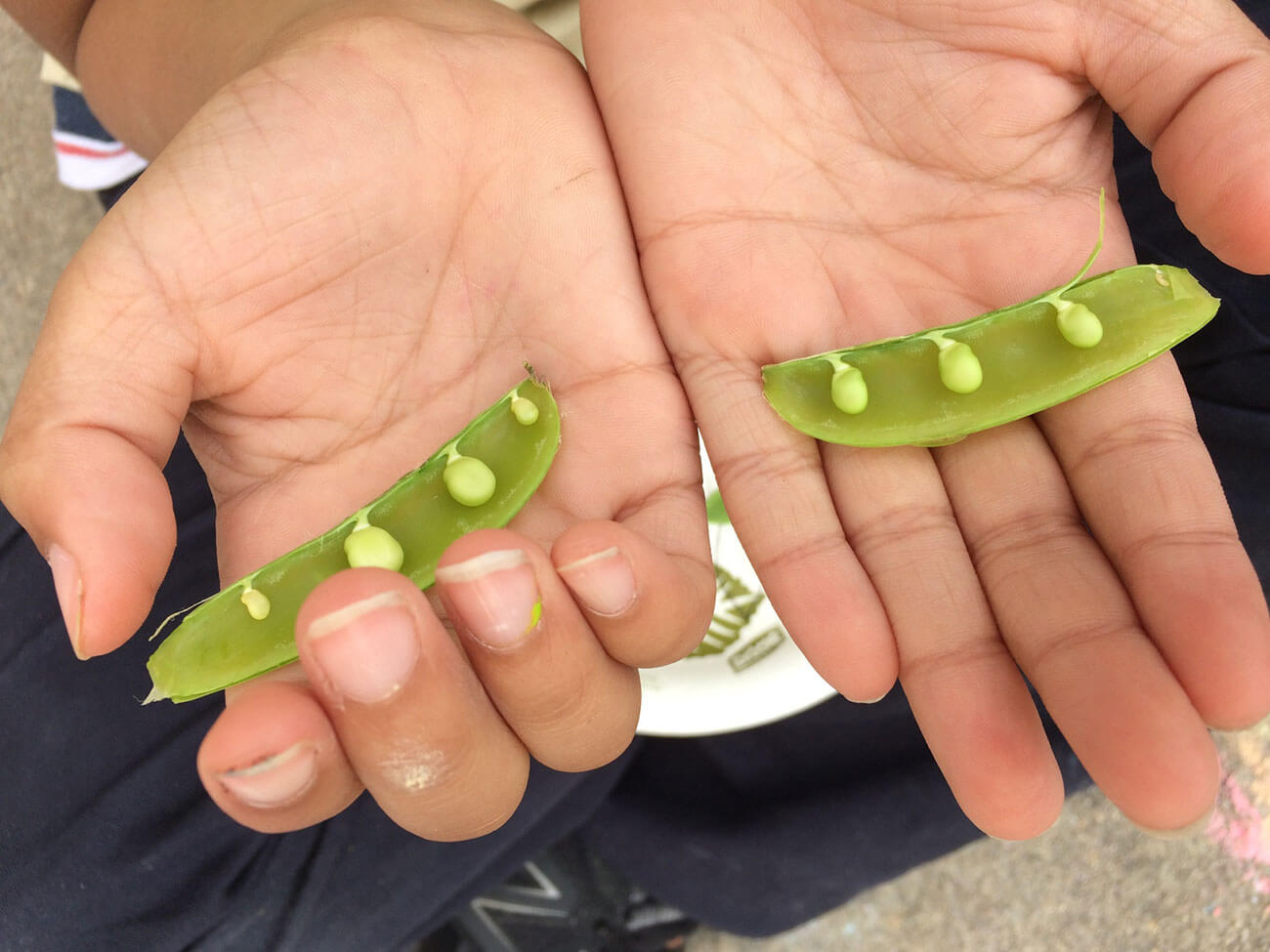
Photo courtesy of CitySprouts.
You’re the founder of one of the nation’s longest-standing school garden programs, so I have to ask: Where did your passion for gardening come from?
Both of my parents were backyard gardeners. They really loved messing about in the backyard. My dad’s favorite part of gardening was the compost—he just loved tending his compost bin! There were all kinds of problems, it attracted rodents, but he really just loved that process. I do too. It’s a calming thing for me, just to put my hands in the dirt and weed. I love weeding.
As we wrap up, what message do you want readers to take away from our discussion?
Every child needs the opportunity to dig in the dirt and discover the natural world around them. When we build gardens at public schools, children have a chance to connect with the natural world, to learn about nature—that’s what science equity looks like.
-
Network News
POLICY UPDATE: Policy and advocacy for the children and nature movement
-
Voices
Binoculars, bald eagles and my journey as a Black birder
-
Richard Louv
THE WONDER BOWL: Ten Spring and Summer Nature Activities for Kids and Adults
-
Network News
Minneapolis Spotlight: The promise and possibilities of parks for youth
-
Voices
Why nature is my motherhood ally


